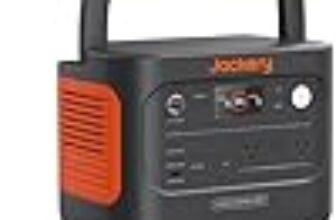
How to Install a Space Heater Safely and Effectively
In this essential guide on “How to Install a Space Heater Safely and Effectively,” you’ll discover crucial steps to ensure your home stays warm during chilly months without jeopardizing your safety. Did you know that space heaters are involved in an estimated 44% of home heating fires? This startling fact underscores the importance of proper installation and usage. With empathy for the discomfort of cold weather, this guide offers clear, step-by-step instructions, helping you create a cozy environment while minimizing risks. From choosing the right location to understanding electrical requirements, you’ll be equipped to heat your space safely and enjoyably.
[content-egg-block modules=AmazonNoApi template=offers_grid cols=3 groups=”SectionIntro” hide=rating]
Choose the Right Location
Position your space heater at least three feet away from flammable materials like curtains, furniture, and paper. Check the area around the heater for items that could catch fire, such as blankets or clothing. For instance, if your heater is near a window with curtains, move it away to minimize the risk. Ensure that there are no magazines or newspapers piled nearby, as these can easily ignite if the heater overheats. This precaution protects your home and provides you with peace of mind.
Set the heater on a flat, stable surface to prevent it from tipping over. Look for a sturdy spot, such as a tile or hardwood floor, rather than placing it on an uneven carpet or a cluttered table. An example would be positioning the heater in the middle of the room, away from foot traffic, rather than tucked behind furniture. Allow for proper airflow around the heater by avoiding placement in tight corners or enclosed spaces. Make sure that air can circulate freely around the unit to maximize its efficiency and prevent overheating.
Check Electrical Requirements
Inspect the electrical requirements of the space heater. Check the wattage rating on the heater’s label, which is typically found on the back or bottom of the unit. Compare this wattage with the capacity of the outlet you will be using. Ensure that the outlet can handle the load, as most standard outlets can support up to 15 or 20 amps, which translates to about 1800 to 2400 watts. If the wattage of the heater exceeds the outlet’s capacity, avoid using that outlet to prevent tripping breakers or causing electrical fires.
Avoid using extension cords whenever possible. Plug the space heater directly into the wall outlet for optimal performance and safety. If you find that the outlet cannot support the required wattage or if you need to use multiple appliances on the same circuit, consider having a qualified electrician install a dedicated circuit. This circuit should be specifically designed for the heater, ensuring safe and efficient operation. Follow these steps for electrical safety:
- Inspect the heater’s wattage label.
- Check the outlet’s amperage rating.
- Plug the heater directly into the outlet.
- If necessary, consult an electrician for a dedicated circuit installation.
Set Up the Heater
Carefully unpack the heater by removing it from the box and taking off any protective coverings or packing materials. Inspect the heater for any signs of damage during shipping. Ensure all parts are included according to the manufacturer’s inventory list, which is often found in the user manual. If there are any missing components or noticeable damage, contact customer service immediately for assistance. Place the heater on a flat, stable surface in the desired location, allowing enough space around it for airflow and safety.
Plug the heater directly into the wall outlet, avoiding the use of extension cords or power strips, as these can pose a fire hazard. Ensure the plug fits snugly and securely into the outlet; a loose connection can lead to overheating or electrical issues. If the plug does not fit properly, do not force it. Instead, check for any obstructions in the outlet or consider using a different one. After plugging it in, turn on the heater according to the manufacturer’s installation instructions, and adjust the settings to your preferred temperature. Always keep the user manual nearby for reference while using the heater.
Test the Heater
Turn on the space heater and observe its operation closely. Listen for any unusual sounds such as rattling, buzzing, or clicking, which may indicate a malfunction. Simultaneously, take a moment to sniff the air around the heater for any strange or burnt odors that could signify electrical issues or overheating components. Ensure that the heater is effectively warming the area by placing your hand near the output or using a thermometer to measure the temperature. If you don’t feel a steady stream of warm air or if the heater struggles to maintain heat, it’s essential to take further action.
Allow the space heater to run for a short period, typically around 15 to 30 minutes, while continuing to monitor its performance. Check the area for even heat distribution; you should feel consistent warmth throughout the space. If you notice any cold spots, it could suggest the heater is not functioning properly. Additionally, observe if the heater automatically shuts off after reaching a certain temperature, which is a safety feature in many models. If everything seems to be working well and the environment feels comfortable, you’ve likely confirmed the heater’s functionality.
Maintain Safety Precautions
Supervise the heater closely while it is in use. Never leave it unattended, especially in rooms where children or pets are present. If you need to leave the room, turn the heater off to prevent any accidents. Position the heater away from flammable materials such as curtains, furniture, or paper to minimize fire risks. Keep an eye on the heater’s surface temperature; if it feels excessively hot, switch it off and allow it to cool down before handling it.
Utilize safety features like tip-over protection and automatic shut-off. Ensure these features are functional by reading the manufacturer’s instructions and testing them regularly. Clean the heater frequently to remove dust and debris that could obstruct airflow or cause overheating. Inspect the heater for any signs of wear, such as frayed cords or cracks in the casing. If you notice damage, stop using it immediately and consider replacing it to maintain safety and efficiency. Taking these precautions can significantly reduce risks associated with heater use.
Final Tips for Safe Usage
In conclusion, ensuring the safe and effective installation of a space heater is crucial for maintaining a warm environment while prioritizing safety. By carefully selecting the right location, verifying electrical requirements, setting up the heater correctly, testing its functionality, and adhering to safety precautions, I can enjoy the cozy comfort of my space without compromising on safety. Following these guidelines not only enhances my heating experience but also provides peace of mind throughout the colder months.
Essential Equipment List
[content-egg-block modules=AmazonNoApi template=offers_list groups=”Materials”]
Maximize Efficiency
Step-by-Step Guide to Safely and Effectively Operate Your Heating Devices
- Read the Instruction Manual: Before using any heating device, I make sure to read the instruction manual carefully to understand its features, safety precautions, and proper usage
- Set Up in a Safe Location: I always place the heating device on a stable, flat surface, away from flammable materials and out of reach of children and pets
- Adjust Temperature Settings: I start with the lowest temperature setting and gradually increase it as needed to avoid overheating or burning anything
- Monitor While in Use: I never leave the heating device unattended while it’s on, ensuring I keep an eye on it to prevent accidents or overheating
- Turn Off After Use: Once I’m finished, I always remember to turn off the heating device and unplug it if necessary to ensure safety and conserve energy
Common Questions About Heating Devices
To ensure optimal performance of heating devices, I perform several key maintenance tasks:
- Regular Cleaning: I clean the heating elements, filters, and vents to remove dust and debris, which can hinder efficiency. For example, I make sure to vacuum or replace filters in forced air systems every few months.
- Annual Inspections: I schedule professional inspections at least once a year. A technician checks for any potential issues, such as gas leaks in gas heaters or wear and tear in electrical systems.
- Thermostat Calibration: I check and calibrate the thermostat to ensure it accurately reflects the room temperature and operates efficiently.
- Checking Ductwork: If I have a central heating system, I inspect and seal any leaks in the ductwork to prevent heat loss.
- Flushing the System: For hydronic (water-based) heating systems, I flush the system periodically to remove sediment buildup, which can affect performance.
- Pilot Light and Ignition Systems: I check the pilot light in gas heaters or the ignition system to ensure they are functioning properly.
- Safety Checks: I ensure that carbon monoxide detectors are installed and functioning, especially for gas heating systems.
By following these maintenance practices, I can help prolong the lifespan of my heating devices and maintain their efficiency.
[content-egg module=AE__amazoncom template=list keyword=”Heating Devices->Secondary” title=”Locate Your Ideal Heating Solutions: Top Retailers and Online Options”]





